We all love a good restaurant binge. Or at least I do as evidenced by recent months where my restaurant spending was significantly higher than normal. Going yolo was fun for a moment, but it clearly was not good for my bottom line.
In an effort to curb my reckless spending – I embarked on a month long no eating out challenge. I must admit that I’m quite pleased with the results. Notably, I was able to save a significant amount of money while feeling noticeably healthier in the process.
Contents
My Ridiculous Restaurant Spending
From August – October, I spent a total of $2,540 in restaurants for an average of $850 per month. Most concerning was that my average restaurant spend during these months was 120% higher than the preceding 3 months. My spending was also increasing at an average rate of 66% per month since July.
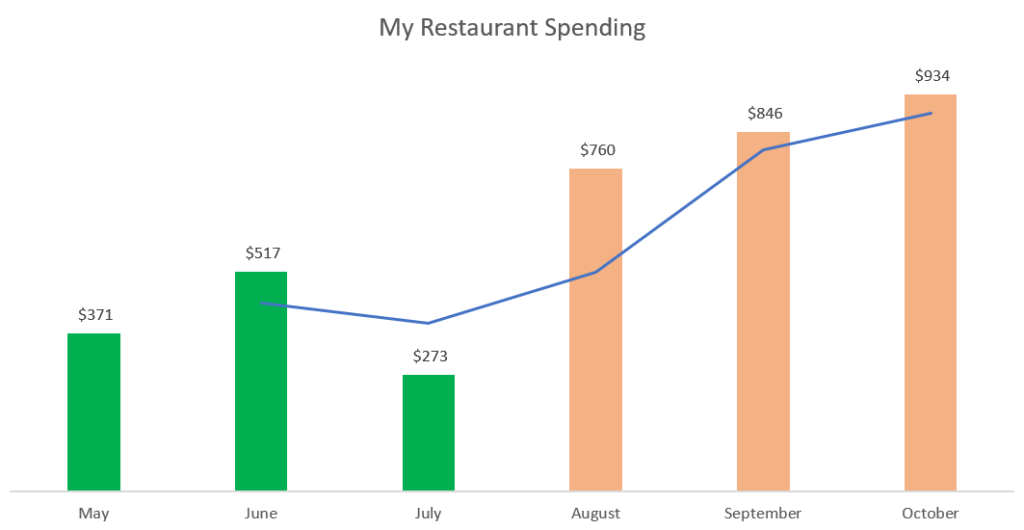
Thanks to having a strong income and no debt – the spending represented less than 10% of my average monthly income. As a result, it could have been easy to become comfortable spending money like this. Change was necessary because I’d much rather act broke to eventually get rich.
I recognized an opportunity for a financial win since restaurant spending is totally discretionary. I knew that permanently boosting my savings rate by even 10% could help ensure I was on track with my finances. It would also accelerate my march toward financial independence by several years.
Why Start A No Eating Our Challenge?
Money and health are the two biggest reasons to not eat out.
Credible data shows that eating out is more expensive than at home. Spending at restaurants is a money leak keeping us broke when we consider average restaurant and alcohol purchases in the U.S. add up to $4,222 on an average income of $94,003.
This means that restaurants and alcohol alone amount to 4.5% of average earnings. It also doesn’t account for the other $5,703 that the average household spends eating at home each year.
Combining the totals show that the average household spends $9,925 or 10.5% of their income eating out, eating at home, and buying alcoholic beverages.

Doing a no eating out challenge is powerful in that it helps you save money. Eliminating just the $3,639 that the average household spends per year eating out can compound in savings to $64,000 over 10 years.
It can also be a net positive to your health – which we will touch on next.
Not Eating Out Is Beneficial For Your Health
Simply put, restaurant meals are designed for maximum pleasure. Ever wonder why restaurant meals are always so tasty? I can tell you with certainty that it isn’t because they all employ Michelin Star chefs in their kitchens.
Generally speaking, restaurants produce delicious meals using an array of ingredients rarely found in at home kitchens.
Take for instance McDonald’s, who according to Reader’s Digest, uses a whopping 10 ingredients to produce their deliciously famous French fries. Not to mention, five of these ingredients are oils. And there is even what appears to be a preservative. See for yourself below:
McDonald's Fries Vs Homemade Fries

Now that we’ve seen what all goes into french fries from McDonalds, let’s compare that to what goes into my fries made at home:
- Potatoes
- Olive oil
- Spices (Salt, pepper, garlic powder, oregano, basil, paparika)
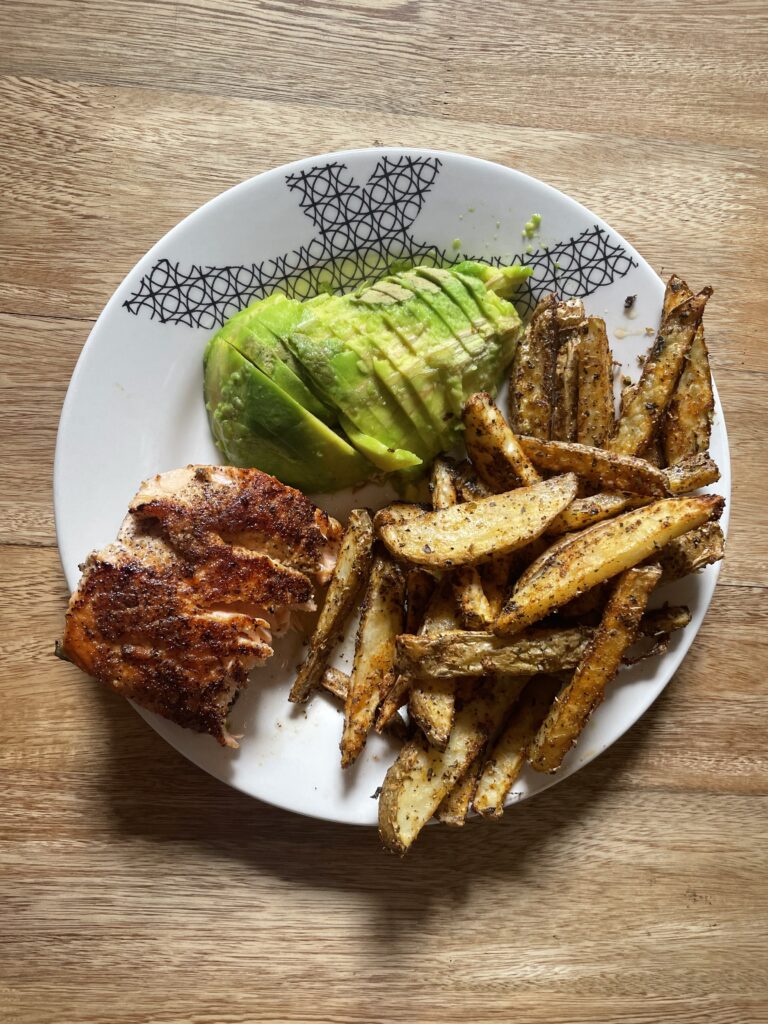
Admittedly, my fries are nowhere near as good as those cooked up by McDonalds. But they are also much healthier as they contain less oil and no preservatives.
This illustrates the problem with restaurant eating. The food is made to be delicious using ingredients that aren’t always good for us. Therefore, a no eating out challenge can be majorly beneficial for our health since we almost always cook better at home.
No Eating Eating Out Challenge Rules
The rules of the no eating out challenge are both simple and flexible. At the it’s core, the challenge comes down to some form of abstinence from eating out. That said, I found it beneficial to think about the challenge in terms of 3 levels. Each level progressively increases in difficulty as follows:
Level 1 Of No Eating Out: Flexible Mode
This first level of the no eating out challenge involves some form of abstinence combined a large degree of flexibility. For example, someone at this level may bar eating out on weekdays while allowing themselves a weekend splurge. Another iteration can be abstinence from a particular establishment that you can’t seem to stay away from.
This is the no eating challenge on easy mode, but it can still be valuable to help you begin making progress in the right direction.
Level 2 Of No Eating Out: Alcohol Only
At this level of the no eating out challenge you are barred from “eating out”, but you can still have drinks outside of your home. This level is good for someone who loves to be social and values drinks out with friends. It’s also good for the person who loves the evening glass of wine.
Whatever the reason, you may decide to choose level 2 if you only want to focus on giving up food while still having the option to drink.
Level 3 Of No Eating Out: Hardcore Mode
Hardcore mode is appropriately named because it involves absolute abstinence from all food and drink purchases at restaurants, bars, cafes, or any other such establishment for a period of time.
I chose to go with this level during my 4 week challenge because I wanted to get the maximum benefit.
What To Expect During A No Eating Out Challenge
Next I’ll share with you what you can expect during a no eating out challenge. These are things that either I or my friends encountered during our challenge. Having knowledge of these things and being prepared for them can go a long way in your success.
You May Form Deeper Connections When You Don't Eat Out
Restaurants and cafes are a convenient way to meet people for a good time. Consquently, not eating out requires us to figure out alternative ways to connect with the people in our lives.
One such way that I was able to connect with people during my no eating out challenge was through dinner parties at my house where I cooked and enjoyed quality time with my friends.
Accordingly, it was during these gatherings that I realized the connection between me and the other people felt much stronger than it typically does when out in public. I believe this is because public environments provide much more external stimulus and distraction than being at home. The environment at home is much more conducive to deeper and more vulnerable conversations.
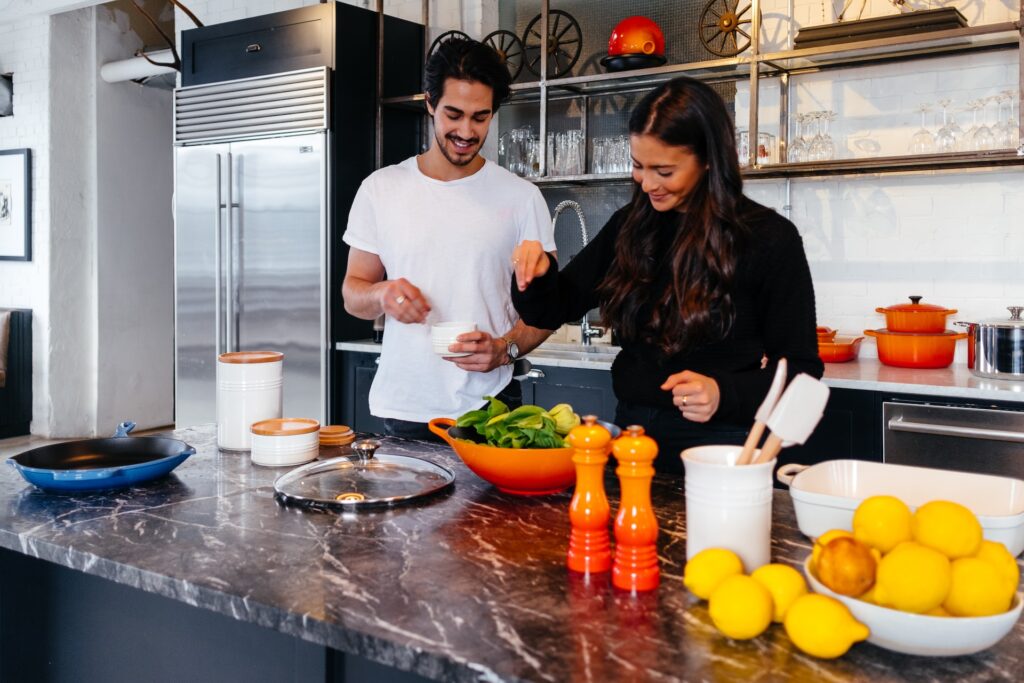
Not Eating Out Creates A Lot Of Temptation
Once you develop an eating out habit, it becomes very hard to break. Eating out is both easy and delicious which is why doing it frequently is such a slippery slope. It is so much easier to just order takeout after a long day than it is to cook.
Because of this, you should expect a lot of temptation to eat out during your challenge. Those moments of being pressed for time, tired, or simply craving never go away. The key to be successful during the challenge is committing to your goal and being prepared with tasty food on hand.
Expect To Be Bored During Your No Eating Out Challenge
I would argue that most of the value of eating out comes from the entertainment it provides more so than the actual food. Unfortunately, a no eating out challenge removes this fun option from your life for a while.
As a result, there were times during my challenge where I became pretty bored. Specifically, my boredom came from either eating the same few foods too frequently or just not having the stimulus of a fun environment outside of my home.
The best way to offset this boredom is to constantly rotate new foods and recipes into your diet. And secondly, you can fight the no eating out boredom by engaging in other interesting activities that don’t involve restaurants.
3 Tips For Successfully Completing A No Eating Out Challenge
No Eating Out Tip #1: Start With A Short Duration
I believe one month is the perfect duration for a no eating out challenge. A month is ample time to get the full benefit of the challenge without having to endure the downsides for too long. Of course, you can always decide on a longer period of not eating out – but a month is a great place to start.
I tend to prefer shorter duration challenges over ones because my odds of success are much higher the shorter the duration. For example, we can do almost anything for a single day. But our odds of sticking to something for a year are pretty low.
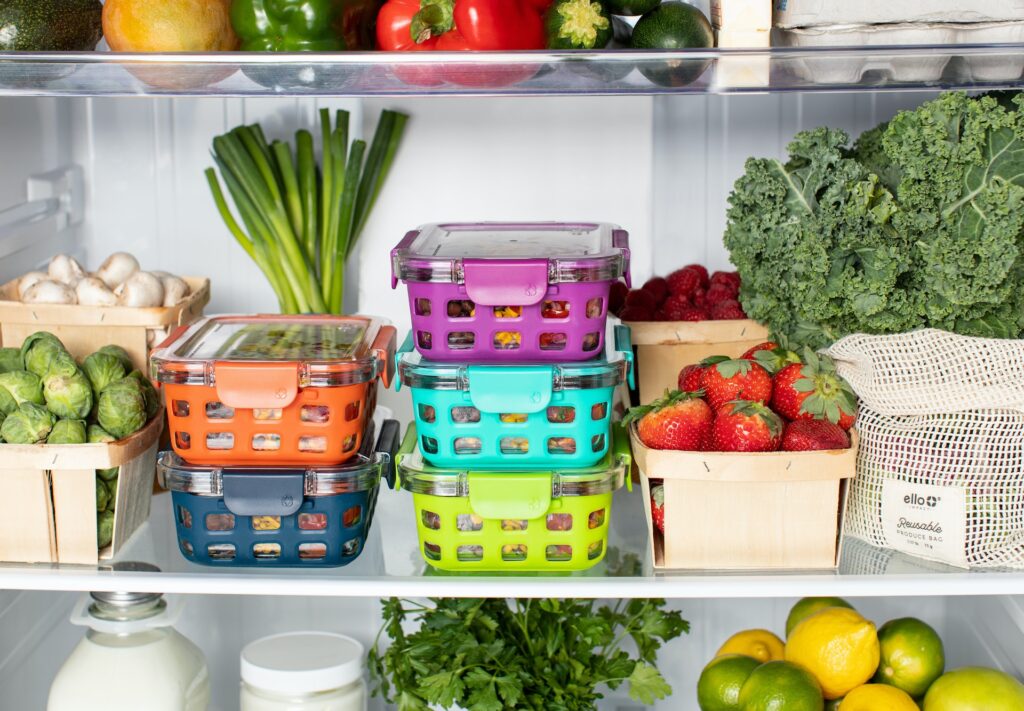
No Eating Out Tip #2: Consider A Combination Of Meal Prep, Freshly Made Meals, And Recipe Experiments
One of the biggest pitfalls to a no eating out challenge is the lack of convenience that eating out provides. Given that, meal prepping is a viable solution as it ensures your refrigerator remains stocked with readily available food.
When things in life are slower, you can cook your typical and then supplement these with the occasional new recipe to keep things interesting.
This setup ensures you have all of your bases covered in terms of food. Meal prep food for when you are on the go. Freshly prepared meals when time permits. And then specialty recipes to spice things up a bit.
No Eating Out Tip #3: Splurge At The Grocery Store
A secret you will learn during your no eating out challenge is that grocery stores tend to have nearly all the same foods you will find eating out. The good news here is that you can still splurge and satisfy cravings when they pop up.
For example, my sweet tooth became active twice during the challenge. Thankfully, I was able to satisfy my desire for sweets with a pastry or ice cream picked in the grocery store. No need to go to an ice cream shop or cafe.
Can Not Eating Out Make You Rich?
Here’s a fun question and exercise: how much is your restaurant habit truly costing you? To answer such a question, we must go beyond just the face value of what we spend eating out each month and consider the opportunity costs.
As for my own costs, we know that I spent an average of $850 per month which amounts to $10,200 per year. At this pace, I would have spent an astounding $102,000 on restaurants over a 10 year period.
Of course, this is only half the picture because it doesn’t account for opportunity costs which we will factor in next.
Now let’s assume that I start a 10 year no eating out challenge and invest that same $850 per month for the entire period. With S&P 500 average returns of 10.13%, the money saved from the no eating out challenge alone would amount to about $180,000.
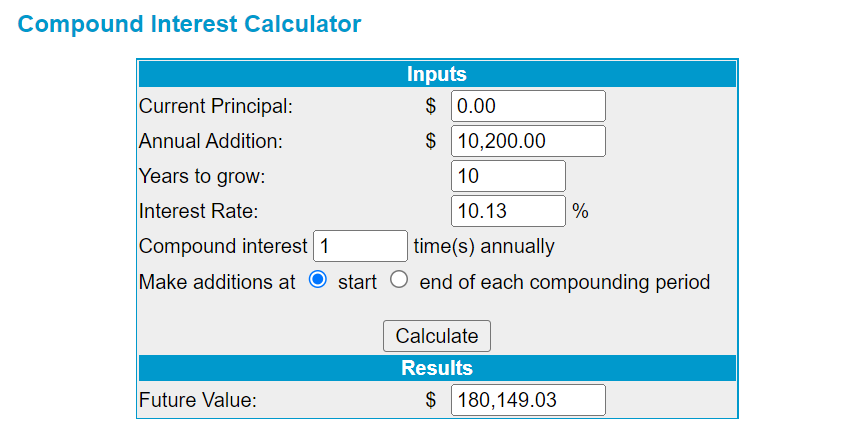
Altogether, not eating at restaurants could feasibly result in a personal swing of close to $282,000 when we consider the retention of the funds not spent at restaurants and the accumulation of the invested funds on the other side.
Is Not Eating Out Actually Worth It?
Only you can judge the answer to that question for yourself. As for me, my month-long no restaurant challenge was absolutely worth it because of the grounding effect it had on my spending and habits.
Now that I have the latitude to eat out again, I plan to have much greater control over my restaurant spending than I did before. I will never deny that eating out is fun and delicious, but I prefer to keep my money as I trek towards financial freedom.
In the end, restaurants are a cultural staple for a reason. Because of this, you will have to decide what role they play in your own life.
